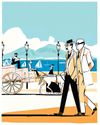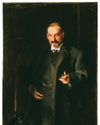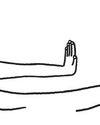
Amid foreign machinations, Lumumba's growing paranoia was warranted.
“It is now up to you, gentlemen, to show that we were right to trust you.” So King Baudouin, of Belgium, declared in the Congolese capital of Léopoldville (present-day Kinshasa) on June 30, 1960. It was a handover ceremony: the Belgian Congo would henceforth belong to the Congolese people. Decades later, Baudouin’s condescension remains startling. His great-great-uncle Leopold II had overseen what was then called the Congo Free State as his personal fiefdom—and established a system of exploitation that was monstrous even by colonial standards. But by 1960 the Belgian government could no longer ignore the wave of anti-imperialist movements that had swept much of the continent. Now the twenty-nine-year-old monarch told the crowd—made up of new Congolese citizens, Belgian officials, and dignitaries from around the world—that independence would be “achieved not through the immediate satisfaction of simple pleasures but through work.”
This story is from the {{IssueName}} edition of {{MagazineName}}.
Start your 7-day Magzter GOLD free trial to access thousands of curated premium stories, and 9,000+ magazines and newspapers.
Already a subscriber ? Sign In
This story is from the {{IssueName}} edition of {{MagazineName}}.
Start your 7-day Magzter GOLD free trial to access thousands of curated premium stories, and 9,000+ magazines and newspapers.
Already a subscriber? Sign In

BADDIE ISSUES
\"Wicked\" and \"Gladiator II.\"

LET'S MAKE A DEAL
\"Death Becomes Her\" and \"Burnout Paradise.\"

ANTI HEROES
\"The Franchise,\" on HBO.

FELLOW-TRAVELLERS
The surprisingly sunny origins of the Frankfurt School.

NOW YOU SEE ME
John Singer Sargent's strange, slippery portraits of an art dealer's family.

PARIS FRIEND - SHUANG XUETAO
Xiaoguo had a terror of thirst, so he kept a glass of water on the table beside his hospital bed. As soon as it was empty, he asked me to refill it. I wanted to warn him that this was unhealthy - guzzling water all night long puts pressure on the kidneys, and pissing that much couldn't be good for his injury. He was tall, though, so I decided his insides could probably cope.

WILD SIDE
Is Lake Tahoe's bear boom getting out of hand?

GETTING A GRIP
Robots learn to use their hands.

WITHHOLDING SEX FROM MY WIFE
In the wake of [the] election, progressive women, who are outraged over Donald Trump's victory at the ballot box, have taken to social media with public, vengeful vows of chastity. - The Free Press.

DEADLINE EXTENSION
Old age, reborn.